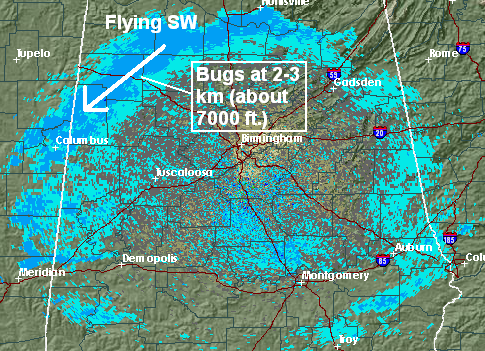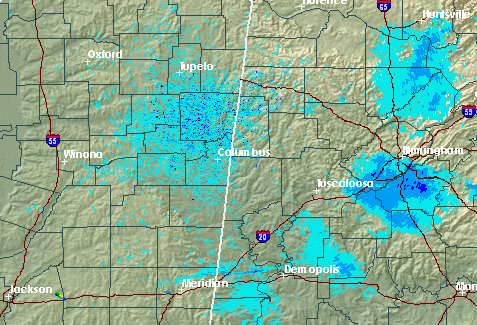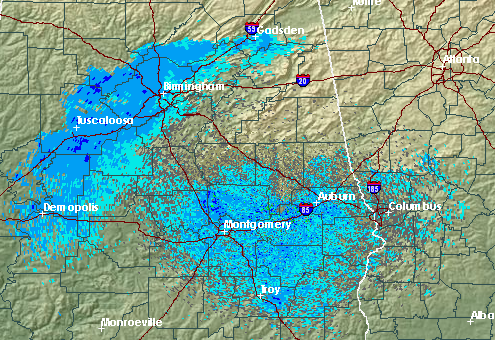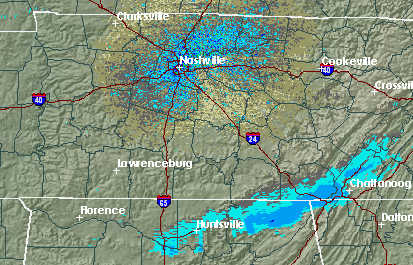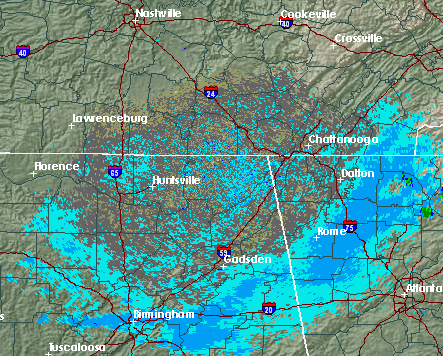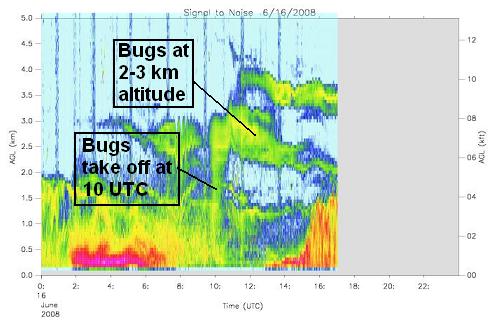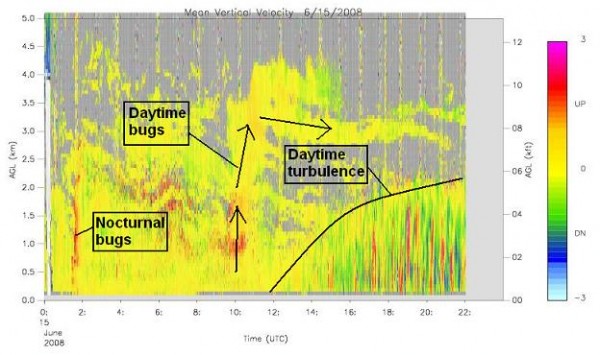Bugs on radar
If you have looked at radar pictures lately (at least over the past few days) over Alabama, you may have noticed some interesting low-reflectivity (blue, less than 15 dBZ) returns at some distance from the radar. It looks a little like ground clutter, but it isn’t, because the returns are showing up at ranges more than 75 miles from the radars, where the radar beam is around 7,000 feet off the ground due to the curvature of the earth and atmospheric refraction.
In talking to Dr. Kevin Knupp, one of the nation’s top experts on ground-based remote sensing (radar, wind profilers, etc.), he feels that these are insects migrating over Alabama. After talking this over for a while, here are some interesting conclusions we came to, and some illustrations.
The bugs are flying at 2-3 km above the ground (about 7,000 feet). We can tell this because they are picked up by 5 radars at ranges near 75 km. See the NWS radar from Birmingham from just after noon today.
Also notice that the heaviest band of reflectivity is to the NW of the radar. Since most bugs are longer than they are wide, the radar “sees” more of the bugs when looking at them from the side. This way, we can tell that they are flying SW. This pattern of the radar picking up the bugs to the NW or SE of the radar is noted also from 4 other radars (Columbus, MS; Montgomery, AL; Nashville, TN; and Huntsville, AL).
These insects are also picked up very well by the UAH MIPS profiler system, which is like a Doppler radar looking upward, which receives data every minute or so. Take a look at the MIPS profiler reflectivity time-height section from today.
The migrating insects seem to take off and fly upwards around sunrise (10 UTC, or 5 am CDT), then fly between 2 and 3 km during the day, and start to spread out and dissipate by late afternoon.
Looking at yesterday, the migrating bugs seemed to take off around 10 UTC, then another set of bugs came out just after sunset (1-2 UTC, or 8-9 pm CDT). These bugs seem to mainly stay lower, so they are probably lightning bugs and many others. Looking at the Doppler velocity from the profiler from yesterday, you can even see the upward motion (red) as the bugs take off; one set around sunset, then the others around sunrise. During the daytime, you can see the intense up and down motions, which represent thermals in the warm boundary layer.
According to profiler wind measurements, since balloon data indicates winds less than 15 knots, we can tell that the speeds coming in are actually insect flight speeds. They’re moving close to 30 knots (35 mph) at times.
Neat stuff!
Category: Uncategorized


